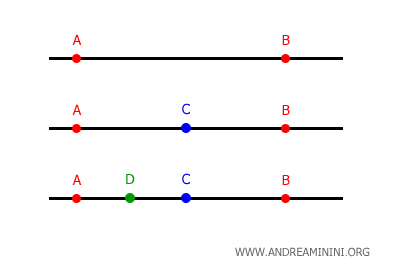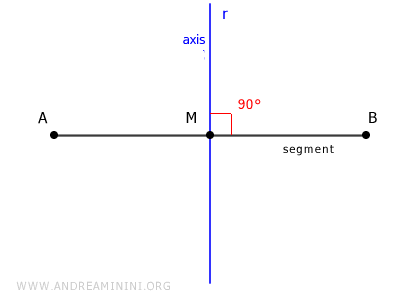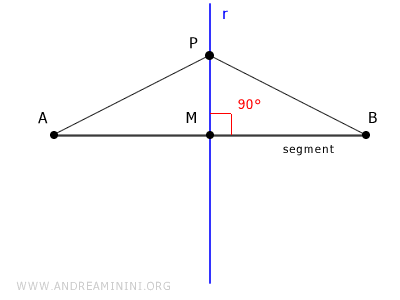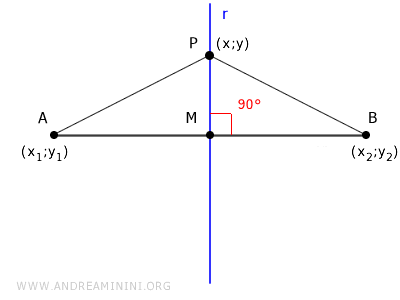Geometric Locus
A geometric locus is a set of points that satisfy a specific property, rule, or condition.
The defining property of a geometric locus is known as its characteristic property.
To define a geometric locus, it is necessary to demonstrate that all points in the set adhere to the same rule and that no other points satisfy this rule.
A point belongs to the geometric locus if it is one of the solutions to the locus equation.
Purpose: The concept of a geometric locus is fundamental for defining geometric entities, curves, and surfaces through properties that can be expressed by algebraic equations.
Practical Example
From a geometric perspective, a line is a set of points that are aligned.
Thus, the characteristic property of a line is the alignment of points in a plane.

To find the points that lie on a line, you need to determine the values of x and y that satisfy the line's general equation:
$$ ax + by + c = 0 $$
In this case, the general equation of the line is the locus equation.
Example 2
The perpendicular bisector of a segment is the set of points equidistant from the segment's endpoints A and B.

Here, the characteristic property is the equidistance from the segment's endpoints $ \overline{PA} \cong \overline{PB} $, which implies that the bisector passes through the segment's midpoint and is perpendicular (90°) to the segment.

Therefore, the locus equation equates the distance of a point P(x;y) from the endpoints A(x1;y1) and B(x2;y2) of the segment:
$ \underbrace{ \sqrt{(y-y_1)^2 + (x-x_1)^2} }_{AP} = \underbrace{ \sqrt{(y-y_2)^2 + (x-x_2)^2} }_{BP} $
This equation identifies all points equidistant from the endpoints of segment AB, i.e., all points on the segment's bisector.
Explanation: In this equation, I measure the distances AP and BP using the Pythagorean theorem on triangles AMP and BMP. $$ \overline{AP} = \overline{BP} $$ $$ \underbrace{ \sqrt{ \overline{MP}^2 + \overline{AM}^2 } }_{AP} = \underbrace{ \sqrt{ \overline{MP}^2 + \overline{BM}^2 } }_{BP} $$

Knowing that MP=|y-y1|=|y-y2|, AM=|x-x1|, and BM=|x-x2|, I derive the equation for the equidistance of points from the segment's endpoints: $$ \underbrace{ \sqrt{(y-y_1)^2 + (x-x_1)^2} }_{AP} = \underbrace{ \sqrt{(y-y_2)^2 + (x-x_2)^2} }_{BP} $$
Other Examples of Geometric Loci
- A circle is the geometric locus of points in a plane that are at a fixed distance from a point called the "center".
- The angle bisector is the geometric locus of points equidistant from the sides of an angle.
- A parabola is the geometric locus of points in a plane that are equidistant from a fixed point (the focus) and a fixed line (the directrix).
- An ellipse is the geometric locus of points for which the sum of the distances from two fixed points (the foci) is constant.
- A hyperbola is the geometric locus of points for which the difference of the distances from two fixed points (the foci) is constant.
And so on.
